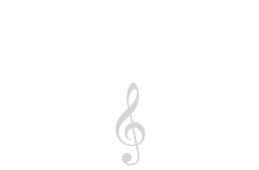Piano color notes
Piano notes chart
The standard piano has 88 keys and because none of the notes repeat, it has a very wide pitch range. The first key on the left is called 0A (Dutch naming) and is the lowest bass note that can be played on the piano. Pitch goes up one key after another to the highest possible note played on the piano, called 8C on the far right. The note 4C is sometimes called the Middle C.
The term tonic tells at which position in the octave you start to count for a certain scale. That means when you play the instrument it is very important at which note you start playing in order to get the feeling for a certain scale. Ordinary you start playing with the tonic note.
The interesting part about the piano is that it is physically made after a Major scale in C tonic. This is very obviously shown when we use the 144 Notes application. All “white keys” are in Major scale in C tonic and are placed in front for easier finger access. Rest of the notes (the “black keys”) are in the back.
Maybe you’ve noticed that solely “white keys” are selected in other scales too, but only at certain tonic. Here is a list of scales with tonic at which all “white keys” are selected:
- Major – C tonic,
- Dorian Mode (Ancient Greek) – D tonic,
- Lydian – F tonic,
- Dominant (Modern Mixolydian) – G tonic,
- Natural Minor – A tonic.
As a matter of fact, all listed scales above are the same; you just start to count at a different note in the octave. They are called relative scales. And as mentioned before it is very important where you start to count – at tonic.
To use only the black keys, the next two relative scales should be chosen:
- Rock (Minor pentatonic) – D♯ tonic
- Country (Major Pentatonic) – F♯ tonic
Over the years the piano became a standard in music and most note names are based on it. The problem is that all musical instruments are not made after above scales and that’s why most note names ‘don’t fit in’. This is solved using the MIDI naming.







































































Stuart & Sons has just made a 108 Key Piano w/ a full 9 Octave Range from C0 to B8 like an Organ & actually including the sounds would be neat.
10x for the info. I watched the video, sounds interesting. Already on todo list from the begining.
Already on todo list from the begining.
This it totally going to rock
Extending the Midi Note Range up to MIDI Note #143 (12 Octaves from C-1 to B10) would give Composers & Musicians more options especially when arranging music. Musescore would benefit from that idea too.
Full range piano, never thought about it before. I think we’ll try to stick with a things that people are familiar with. Thanks for suggestion anyways. Maybe we’ll add an option to streach it in the future.
I think we’ll try to stick with a things that people are familiar with. Thanks for suggestion anyways. Maybe we’ll add an option to streach it in the future.